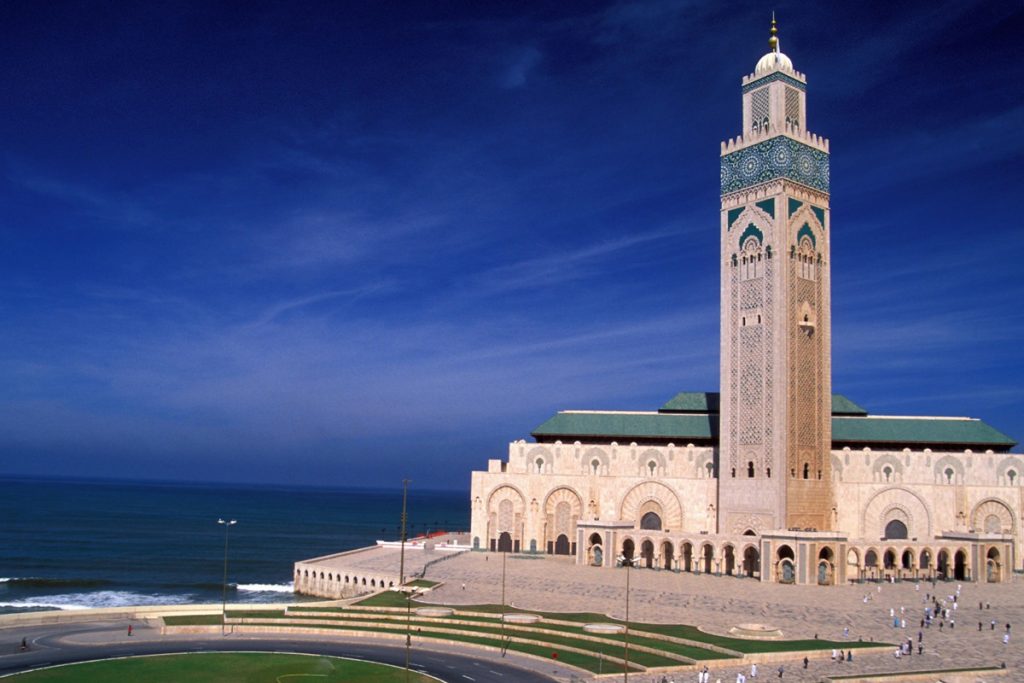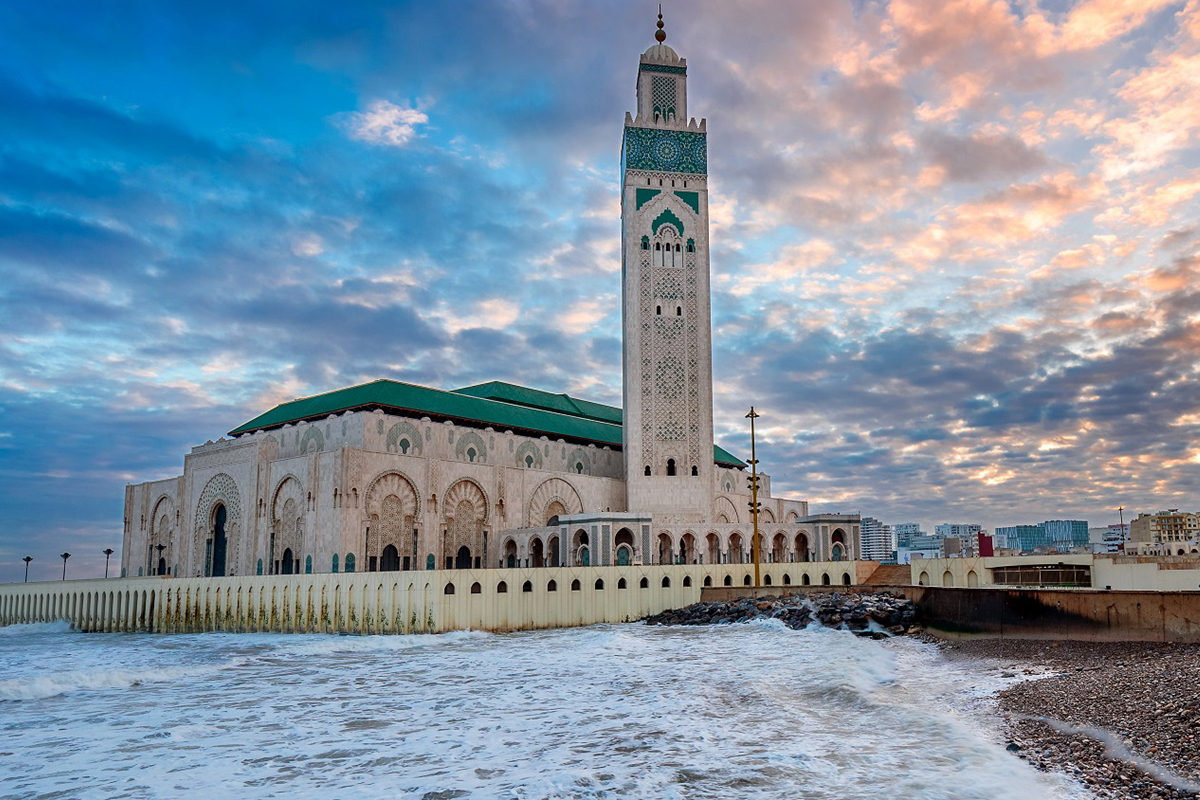We may earn money or products from the companies mentioned in this post.
Morocco: Hassan II Mosque is a breathtaking mosque situated in Casablanca, which houses Africa’s third-largest mosque after the Great Mosque of Djenne (in Mali) and Al-Azhar Mosque (in Egypt). This is an architectural wonder without equal, with nearly twenty thousand worshippers inside. On top of these impressive numbers, it contains over a dozen minarets and two large prayer halls for men and women. It also has three more floors below ground, with nearly a thousand more worshippers praying their hearts out on any given day. This post will highlight the most critical features of this landmark building and why it’s worth visiting:
EXTERIOR DOMES DESIGN
A French architect Rene Mathis designed this mosque. The mosque is a modernist structure described as an “L-shaped” building with the main dome and two smaller domes along the line running parallel to the coast. The alternating pattern of two small domes and one main dome is a juxtaposed arrangement. Each of these two small domes is called minarets.
The construction has an indoor and outdoor prayer hall, bedrooms for visiting scholars, a multi-purpose social area, a library, and a coffee shop. The mosque has become an iconic landmark of Casablanca.
The Hassan II Mosque consists of 43 domes (minarets) on a single axis. The mosque has two smaller domes at either end that are called doorways. The two smaller domes (doorways) are called Minarets. The mosque has three main floors in addition to a basement and prayer hall; each floor is separated by a podium or base level that increases the height of the building.
PRAYER HALL
The prayer hall has a diameter supported by columns, each with its design. The mosque features buttresses at different levels, supporting buildings on the same axis. The buttresses are used in conjunction with spaces in between as lighting sources and a source of illumination from within the mosque. The supporting columns create an interplay between flat surface areas used for windows, blending into the topography that surrounds the building.
The two smaller domes at either end of the mosque act as doorways. The use of domes in the place of doors reflects the Islamic tradition of placing an essential building on a raised area. The Hassan II Mosque also has a unique and modern structural element: buttresses used to support and elevate the architecture to different levels. The interior design was painted by Louis-Michel Van Loo, from France, with blue panels on the pillars; he was awarded a UNESCO prize for his work in 1993.
Located on the outskirts of Casablanca, Morocco, the Hassan II Mosque – or Grande Mosquée Hassan II in French – dominates the skyline as one of the largest mosques in Africa and Europe.
People consider it one of the most beautiful mosques in all of Morocco and are considered by many Muslim scholars and architects to be an example of perfect Moroccan architecture. If you’re planning to visit Casablanca or happen to find yourself nearby, this mosque is worth checking out.

Hi~Living Deals from "Milk Bar"

